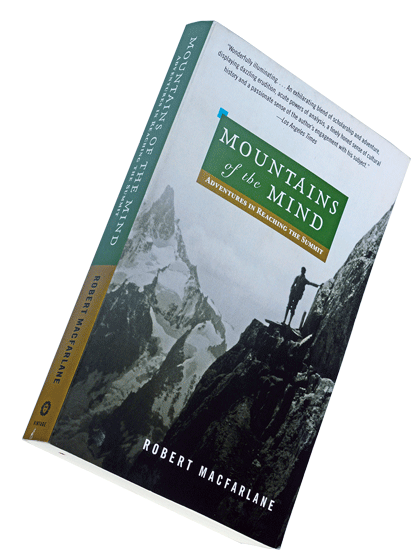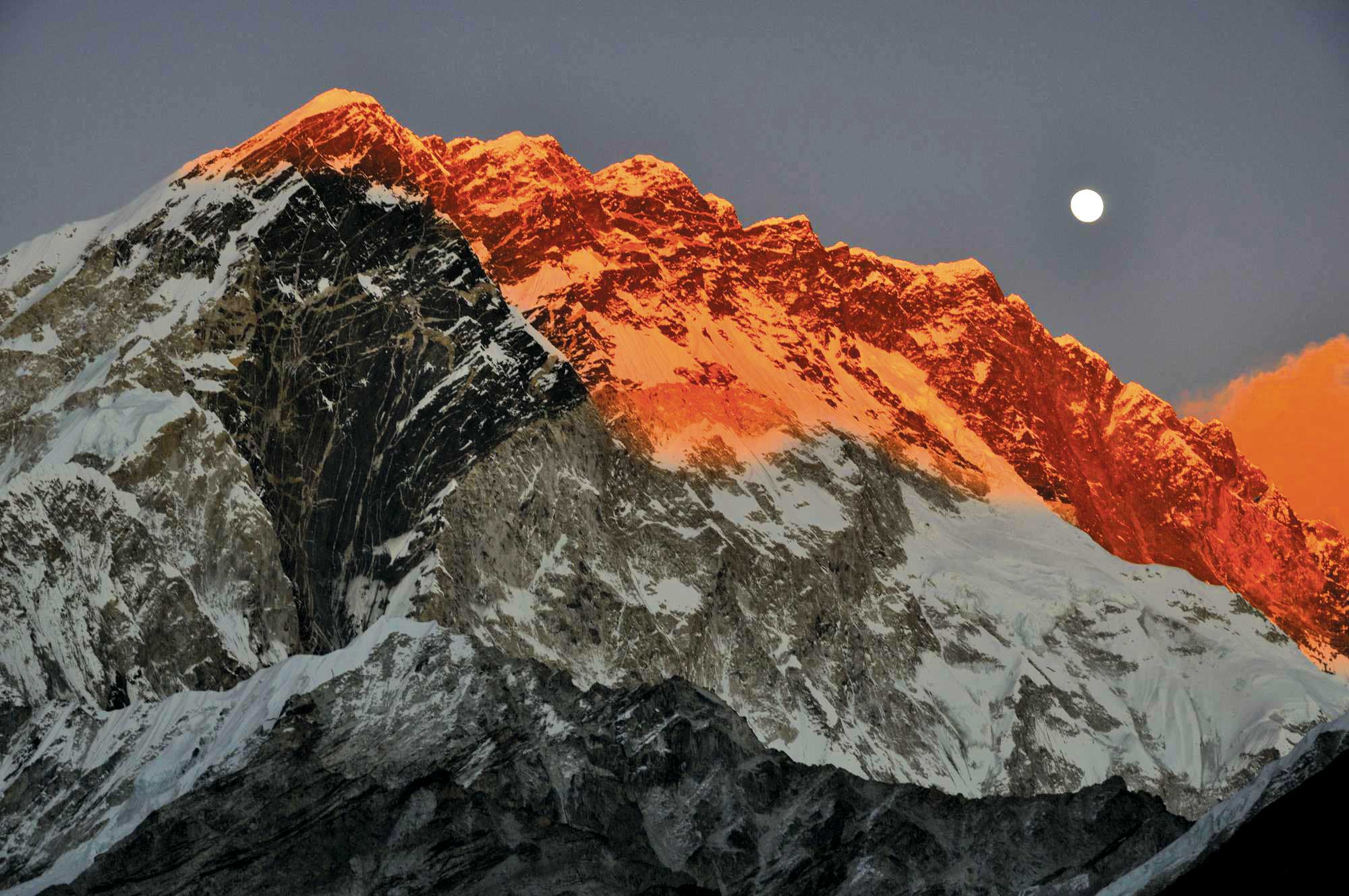
It is not the mountain we conquer but ourselves. -Edmund Hillary
The above-mentioned quote resonates within the entire book, Mountains of the Mind, by Robert Macfarlane. It is an intriguing title for a very strong book. What comes to mind are the tall and majestic mountains and the deep relationship that Macfarlane has with them.
Using richly detailed and legendary accounts of climbers, and combining them with his own personal expeditions, Macfarlane weaves a story about the most majestic and unknowable specimens on Earth, the mountains. Macfarlane has magically combined his personal childhood inspiration, The Fight for Everest, an account of the 1924 British expedition led by George Mallory and Andrew Irvine, which ended in the tragic disappearance of both climbers. The author uses historical facts to help give us a better understanding about how these majestic peaks, once feared, were then slowly conquered.
Three centuries ago, no one was interested in mountains and other wild places. The land could not be cultivated, nor was there any point in possessing them, and the people who inhabited these heights were considered lesser humans. Mountains were always perceived as mythical beings or mystical places, forbidden and untouchable. Always shrouded in a cloud of mystery there have been many myths; some believed them to be the home of dragons and other mysterious beasts. During the seventeenth century, the mountains were viewed as a burden, something tedious and arduous, to be traversed en route to a preferred destination.
But, in the middle of the eighteenth century, this perception of the mountains began to change. People started becoming scientific and were suddenly curious to know about the origins of mountains. By studying geology and carrying out extensive research, they traced the mountains’ origin to the time Earth was formed, which left them in awe. The premise of the sublime which was introduced by Edward Burke, the balance point of fear and exhilaration that could be achieved when climbing, coupled with the sense that the mountains were much, much, older than previously thought, meant that the great thinkers of the age became interested in the how’s and why’s of their formation. The mystery and awe still remained around Mt. Everest, the highest, most feared, and at that time, still unmapped peak.
Macfarlane notes that it was not before the nineteenth century that people wanted to climb the tougher peaks. But, later on, people took it upon themselves as a challenge to scale the highest and most dangerous peaks that one could dare to climb. Climbing was soon to become a widespread ambition and ever more popular sport.
In the book, the author regales us with tales of the real dangers involved in mountaineering. Not all is rosy, as is clear from the terrifying number of deaths due to various causes. He recounts his own tales of frostbite nearly claiming his fingers and other body parts. It is not all morbid, though, as he mentions the luck that was shining down on him. He recounts his near-death experiences, as when rocks rained down on him, and hanging on for his life to keep from falling into a glacier’s deep trenches.
Macfarlane has written a very structural book. Although it gets a bit slow in places, he has weaved the chapters ranging from personal accounts to historical facts and poetic outlooks.
There is a section on the mystery of George Mallory and Irvine who were lost on Everest in 1924, who as mentioned above, provided an inspiration of sorts for the author. He recounts the well-known story of how when a New York reporter in 1922 asked Mallory about his reasons for returning to the mountain, and Mallory replied, “Because it’s there.’ He also discusses Maurice Herzog's Annapurna, an account of that first ascent, and further combines the element of thrill by adding the stories of thrill seekers past and present, such as Coleridge and Darwin and their adventurous climbing tales in Chile. He adds a poetic touch by quoting Casper David Friedrich’s famous 1818 painting of the wanderer above a sea of clouds, which paints a romantic image of the mountains. He touches on the spirituality that lurks in the mountains, of those who believe that climbing mountains brings a person closer to God. He regales us with the tales of the bold Maurice Wilson from Yorkshire, who boldly attempted to scale Everest despite warnings from both English and Nepali authorities.
Macfarlane has traveled quite a bit. He alternates from his personal climbing experiences about large and small mountains to historical references about other adventures and more serious climbing events.
A very interesting part of this book, particularly for those of us in Nepal, is the second to last chapter titled ‘Everest.’ Throughout the book, we have seen Macfarlane sprinkle references regarding Mallory and his obsession with Mt. Everest. Here he goes into more detail, tracing the history of an avid climber and adventurer who summited various peaks, including setting one of the hardest routes up Pillar, a mountain in the UK’s Lake District. Starting in 1921, he was a member of three expeditions to Nepal, where they explored various potential routes up the mountain. Mallory was fixated with trying to climb Mt. Everest. Despite a number of failures and fatalities, he was not deterred and made his final attempt in 1924. They were plagued by mist on the way, and their last sighting across a ridge has now become a thing of lore. Despite the tragic sides, Macfarlane has shown rather beautifully the juxtaposition of Mallory’s internal struggle with his love for his wife and obsession with climbing Everest.
Overall, Mountains of the Mind is a gripping tale of personal accounts and historical facts. This book is the perfect amalgamation of history, biographies, emotions, psychology, and so much more. This book will inspire you to seek out even more tales of adventure, exploration, and mountains, and who knows, you might even go buy a pair of hiking boots!
Mountains of the Mind by Robert Macfarlane is published by Vintage Books, A Division of Random House, Inc.











